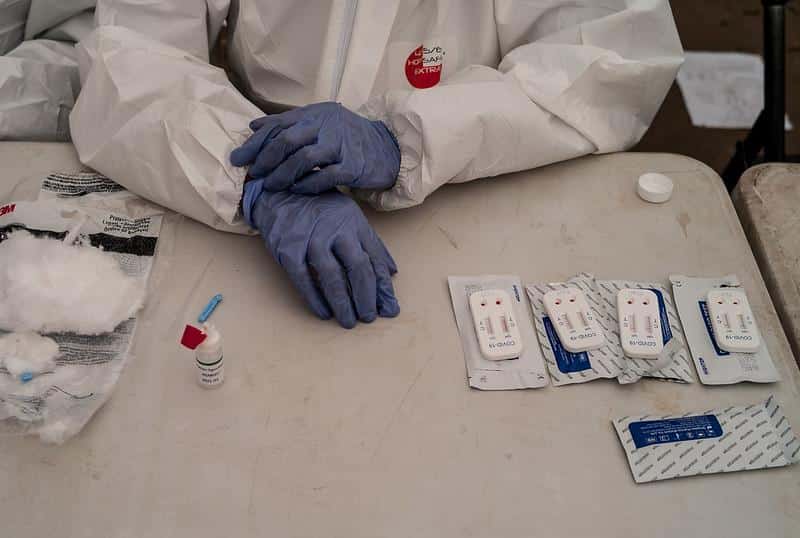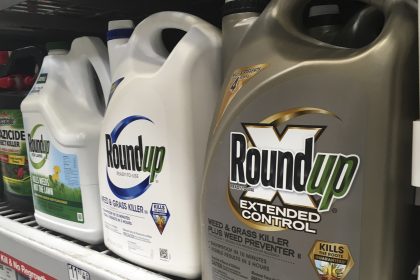US Scales Back COVID-19 Response Efforts, Concerns Over Future Variants Remain

WASHINGTON — The U.S. is scaling back COVID-19 response efforts, despite a recent uptick of infections involving an omicron subvariant known as BA.2 which now accounts for about 35% of all positive COVID infections in the country.
“BA.2 is omicron — with a twist,” said John Moore, professor of microbiology and immunology at Weill Cornell Medicine, during a phone call with The Well News.
The twist, Moore said, is that BA.2 is 30% more transmissible than the original omicron strain BA.1, but so far, data shows that it is still 75% less lethal than the delta variant.
According to Moore, omicron was unique in that it had a significantly increased ability to evade antibody protection, making COVID vaccines less effective at preventing infection. The vaccines, however, did not lose much efficacy action against severe disease and death.
“Most of the people who have been dying of omicron — and there are still around 1,200 a day in the states — are unvaccinated. Omicron rarely killed vaccinated people, and it only did so when they had severe preexisting comorbidities. … Very few otherwise healthy, vaccinated people were killed by omicron,” said Moore.
Moore said the U.S. Centers for Disease Control and Prevention reported about a 12 to 1 ratio of deaths of unvaccinated to vaccinated when it came to omicron infection.
In mid-February leaders from the World Health Organization issued a warning that BA.2 was a variant of concern. At the time the subvariant accounted for only about 3.9% of all new infections.
Since the WHO issued that warning BA.2 now accounts for nearly 35% of all COVID-19 cases, according to data released Tuesday from the CDC.
Moore said that a virus seeks to replicate its genome, and the more transmissible the virus is, the more people it will enter.
“What we’ve always seen, in all these different ways driven by variants, is that the most transmissible variant wins out. We saw Wuhan replaced by D614G, replaced by alpha, replaced by delta, replaced by omicron, and now BA.2,” said Moore.
“The question is how big will that uptick be?” asked Moore.
Moore said that the increased spread of BA.2 is largely being driven by reduced restrictions around the world, which is why he said it may be more transmissible than the original omicron strain.
“[What] you’re seeing in Europe and the states is this COVID fatigue, everyone wants it to be over. There’s a big political dynamic at the moment, where it is unpopular for politicians who are essentially in charge of cities, states and governments to insist on restrictions on what the public can do,” said Moore.
In Hong Kong, new stay-at-home orders were issued in recent weeks due to increases in BA.2 infections, but Moore said the lockdown there is largely driven by Hong Kong’s “zero COVID policy” which was threatened by the emergence of omicron, and that the uptick in deaths in Hong Kong is mostly among the unvaccinated elderly.
In the U.S., around $22.5 billion in COVID-19 relief aid was dropped from the Consolidated Appropriations Act of 2022, which was signed into law by Biden on March 15, 2022.
According to the White House, the exclusion of COVID-19 aid from the spending package could result in no additional purchases of monoclonal antibodies, fewer tests made in America, fewer treatments for the immune compromised and poses a risk of the country running short on vaccines.
In a recent letter to House Speaker Nancy Pelosi, the White House indicated that the federal government initially planned an order of more monoclonal antibody treatments for March 25 but without additional funding this order will not be possible.
Moore said there is evidence which shows that omicron did take the protective ability out of monoclonal antibody treatments from certain drug manufacturers, like Eli Lilly’s monoclonal antibodies.
But another long-acting antibody combination known as Evusheld has shown it can neutralize activity against omicron variants including the new BA.2 variant, based on preclinical data released this week from researchers at Washington University.
The Biden administration has also begun unwinding federal programs to reimburse health care providers for COVID services, which could mean that uninsured Americans may soon have difficulty in obtaining free COVID testing and treatments.
The Health Resources and Services Administration announced they would stop accepting reimbursement claims for testing and treatment due to a lack of sufficient funds.
According to the announcement, after Tuesday March 22, no claims submitted for tests or treatment will be processed or paid, and on April 5, the uninsured program will stop accepting vaccination claims.
On Feb. 28, the Centers for Disease Control and Prevention also updated its guidance to no longer require universal case investigation and contact tracing, except in high-risk settings like long-term care facilities and jails. New York City is ending its contact tracing programs at the end of March.
Moore said even in the absence of key contract tracing programs, he is not concerned about the ability of researchers to detect any new and emerging variants, but still more COVID funding should be secured for the future.
“This isn’t 2020 anymore. I don’t have concerns that we would not see something re-emerge if it did,” said Moore.
“State-level tracking programs are quite good, but is there a risk of becoming complacent? Is there a risk of saying the pandemic is over, when we want it to be over?” questioned Moore.
“I certainly think it’s possible that we have not seen the end of the pandemic,” said Moore.
Alexa can be reached at [email protected]
























